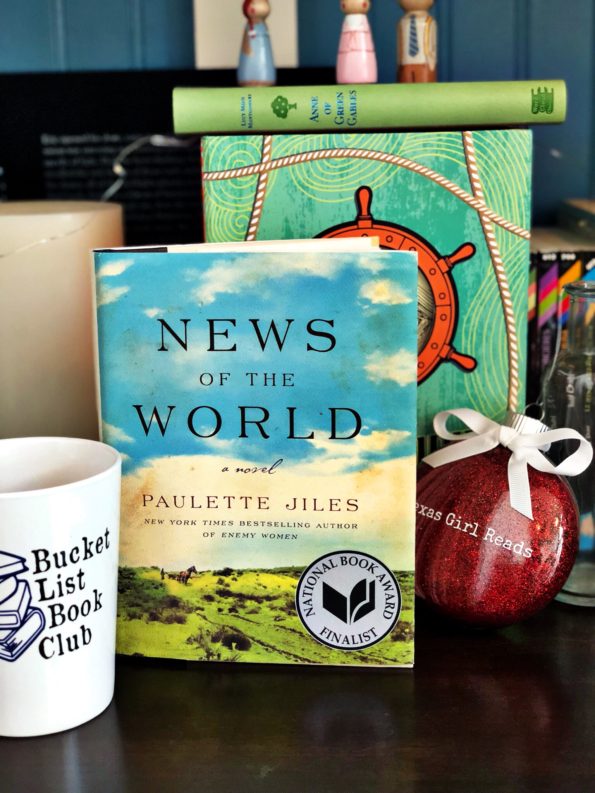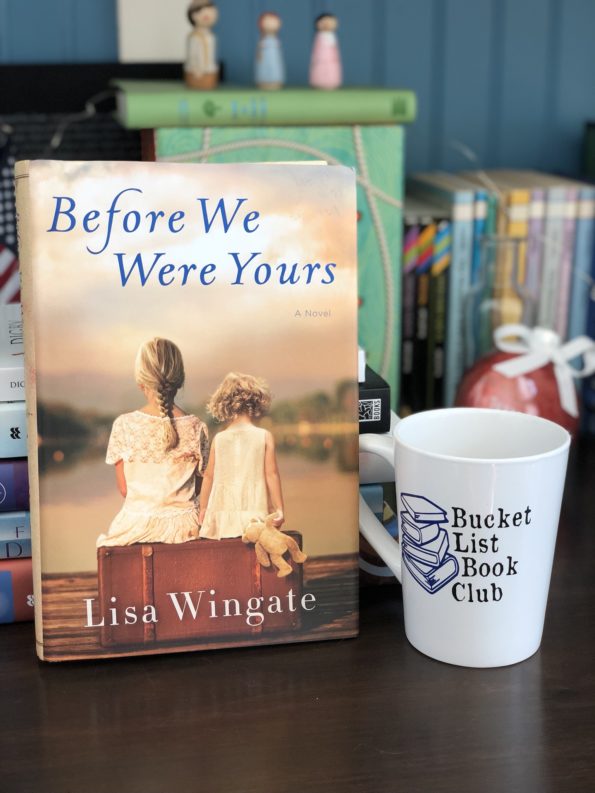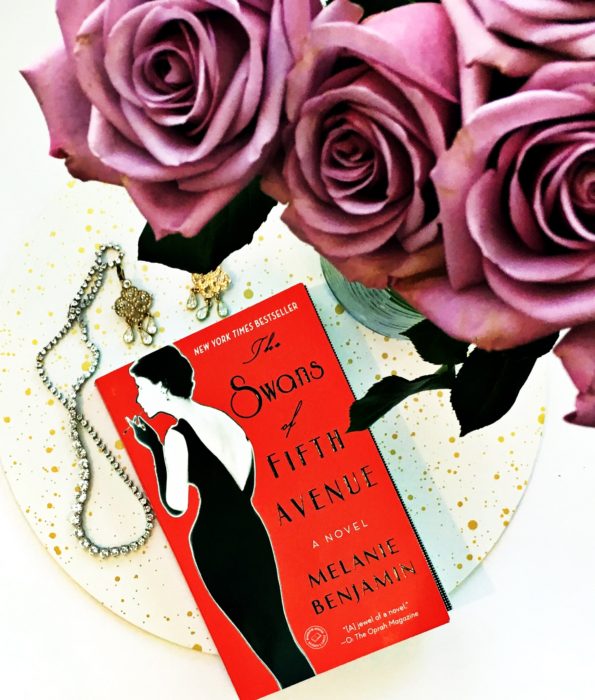Review: Refugee

If I can only recommend one life-changing, necessary book this year, let it be Refugee by Alan Gratz. This is a middle-grade novel that I would recommend for sixth grade (or a well-read fifth grader who’s ready for a strong book like this) and up, including adults. It’s a powerful story that I buddy-read with my 10-year-old, and it’s on both of our top ten favorite books lists of this year.
Refugee tells the story of 3 children: Josef, a Jewish boy living in 1930s Germany; Isbael, a girl living in Cuba in 1994; and Mahmoud, a Syrian boy in 2015. All three are attempting to escape impossible situations with their families. It would be unbelievable if it hadn’t all actually happened in some form to real children throughout history, and still today. All three kids go through nerve-wracking ordeals to find some semblance of freedom, and their stories tie together in both heartbreaking and heartwarming ways in the end.
I don’t want to tell you a lot about the plot because I think it’s better going in just knowing that these kids are in obviously difficult situations. Gratz’s research is impeccable, and the humanity he brings to these characters is almost unparalleled. Refugee is, without a doubt, going in my top 10 books of 2019. It is heartbreaking, but a necessary book that I think should be required reading for sixth graders. It is historical fiction for middle graders (and adults, to be honest) that is the best I’ve ever read outside of Echo by Pam Munoz Ryan. (My review of Echo is HERE, and if you haven’t read that, why not??)
Refugee is truly an amazing, page-turner of a book that will teach you and your kids about what it feels like to be on the run as a child and not understand why people won’t or can’t help. It’s impossible not to gain insight into the refugee crisis after reading this, and to become a bit more compassionate to our fellow humans.
EXTRA!
If your child is younger (around 10) I would recommend buddy-reading this. There are some difficult scenes that would be good to discuss. There aren’t any graphically violent scenes, but people do die in sudden and sad ways, and my son had one nightmare and did cry at the end of the book. He still loved it and wanted to buy it so he would always have a copy, so we did!
ALSO!
Don’t skip the long author’s note at the end! Gratz gives some great details about the true stories that inspired this book.
Review: Moloka’i
I’ve come to believe that how we choose to live with pain, or injustice, or death . . . is the true measure of the Divine within us.
Sometimes a book comes to you at just the right time, even if you don’t realize it’s the right book. Moloka’i by Alan Brennert was my in-real-life book club pick one month, and I’ll be honest. I wasn’t excited about it. I almost didn’t even read it, but I decided that I would at least start it, since we had a family trip to Hawaii planned as well, and this book takes place in the Hawaiian islands. Once I started, I couldn’t put it down. Like, walking around my house while reading, couldn’t put it down. I had no idea this was the historical fiction novel I needed in my life, and I am so, so glad I didn’t skip it!
Rachel Kalama has a wonderful life with her family on the island of Oahu. She is a typical 7-year-old girl, playing, going to school, and idolizing her dad. When a rosy spot appears on her skin and doesn’t go away, she is diagnosed with leprosy and her life, and childhood, change forever. She is sent to the island of Moloka’i, a designated leprosy colony, to live separately from the rest of Hawaiian society. She will either get better and be released . . . or not. She learns how to live a full life even when facing death (in her friends, family, herself) every day.
This is a fictional novel, but the setting is real. Moloka’i was home to a large leprosy colony from 1866-1969. Rachel’s experience in the novel is representative of many people who did go through being separated from their families and sent to this small island to live out the rest of their days after being diagnosed with leprosy. When I started reading Moloka’i, I knew nothing about this part of Hawaiian history, and I found it heart-breaking, intriguing, and something I still want to learn more about. I absolutely loved Rachel and her father, Henry. Really I loved all of the characters. They all felt very real and fully formed, and I was invested in the book as much for the plot as I was for the well-being of the characters. I was rooting for Rachel and the journey she was on throughout the whole book, and I felt like I got a very good sense of what it would have been like to live in Hawaii, and on Moloka’i, in that time period.
If you like historical fiction and want something a little different (I’ve read nothing about Hawaii’s history and now I want more), please pick up Moloka’i! I was hesitant at first because . . . well, a book about a leprosy colony just sounds sad. But this book, while it has its sad moments, is anything but. It has a lot of heart, and really focuses on how people can be faced with the worst situation and still come out of life with love, friends, and strong sense of self. Isn’t that all anyone wants in life? To love and be love, to be understood and to have an understanding of others. Moloka’i will give you all of that, with a little history lesson thrown in.
⭐️⭐️⭐️⭐️⭐️
EXTRA!
There’s a sequel!!! Daughter of Moloka’i will be out on February 19th, and you can bet I’ll be reading it!
(And yes, I did take this book all the way to Hawaii to photograph on the beaches of Oahu!)
[Top]
Review: News of the World
And here he was in his mild and mindless way still roaming, still reading out the news of the world in the hope that it would do some good, but in the end he must carry a weapon in his belt and he had a child to protect and no printed story or tale would alter that.
I have a confession to make. Even though I am from Texas and have always lived here (except for a semester in college when I lived in Washington, D.C.), I don’t read a lot of Texas books. I don’t really seek out Texas authors, and I tend to shy away from books about Texas. Why that is I’m not sure, except that I have my own opinions about Texas, and perhaps I don’t want them messed with. But when several people, including my mom and Anne Bogel, recommended News of the World by Paulette Jiles, I decided to make it my Bucket List Book Club pick for August and “force” myself to read it. Guys, this is a book about Texas written by a transplant Texan who lives about an hour away from me. And y’all, I’m so glad I did.
News of the World takes place just after the Civil War, when there was still a ton of unrest in Texas, no one trusted each other, and the relationship between Texans and Indian tribes was contentious at best. Captain Jefferson Kyle Kidd, a military veteran, travels around Texas reading news stories from international newspapers to crowds of people, who all pay to listen. They lose themselves in the news and tragedies of far away countries that don’t quite seem real in order to forget their own problems for a little while. At one of his stops, he is offered $50 to return a girl, Johanna, who was kidnapped by the Kiowa tribe to her remaining family in San Antonio. For four years she has been living with the Kiowas, and she no longer seems to remember her family, how to speak English, or where she came from. The bulk of the book is about their journey together and how they each grow and change.
First of all, I just want to say that you MUST read this book, if only to read it before the Tom Hanks movie version comes out. It is so well written and well researched. It takes place during a very interesting and confusing time in Texas history, but I think a lot of parallels can be drawn to today’s history as well. (People losing themselves in news from other countries to escape thinking about our own news? Yup.) The book strikes a nice balance between a quiet story and intrigue. Yes, it’s a quiet book, but I absolutely wanted to know what happened after every chapter. Along those lines, I think this book would be best read in one or two sittings. I took too many breaks, and I wish I had just sat down and read it straight through. It’s a long journey, but a short book, and really lends itself to a lazy day spent in a comfy chair.
News of the World is such a good story and such a quick read, I really think everyone should give it a try. It’s amazing to see Captain Kidd’s journey from not wanting to take Johanna at all to becoming attached to her and fully invested in her happiness and wellbeing. Johanna’s story is heartbreaking (read the author’s note at the end), but is tempered by the story of a tough old Texan soldier turning into a softie. Sort of. It also has one of the best, most beautiful final chapters of a book I’ve ever read.
⭐️⭐️⭐️⭐️⭐️
EXTRA!
There are no quotation marks used in this book! The absence of quotes was a little jarring at first, but I ended up really appreciating it. Whenever I see quotes on a page, my eye is automatically and involuntarily drawn to them, and I often have to go back and re-read what came first. Without quotes, I really paid attention to each sentence as it came, instead of looking ahead to the dialogue.
Review: Before We Were Yours
I hold Huckleberry Finn real tight against my chest and start across the yard. Now we can leave this place behind anytime we want. All we gotta do is join up with Huckleberry Finn. There’s room on his raft for all five of us, I’ll bet. Maybe we’ll find the Arcadia out there somewhere.
I sat for a good 20 minutes trying to figure out what to say to convince you all to read Before We Were Yours by Lisa Wingate, and there just aren’t enough words for it. If you haven’t read it yet, please, please read it! This is historical fiction based on the true story of Georgia Tann and the Tennessee Children’s Home Society that operated in the early half of the twentieth century. It is shocking, heartbreaking, important, and, at its heart, hopeful. This was our Bucket List Book Club selection for May, and I am so, so glad that I read it.
The story is told in alternating chapters. It begins in Memphis in 1939 with Rill Foss and her 4 brothers and sisters. They live on a boat in the Mississippi River with their parents, but when their mom must be rushed to the hospital during a difficult birth, the 5 remaining children are taken to the Tennessee Children’s Home Society in order to be placed (sold) with other (wealthy) families who are looking to adopt. In present day Aiken, South Carolina, Avery Stafford is busy building her career as a lawyer, taking care of her ailing politician father, and figuring out if she really wants to be with her fiancé. When a chance encounter with an elderly woman in a nursing home, she begins to look into her family’s past and discovers some secrets she’s not sure if she’s ready to find out. The two stories weave themselves together and illustrate the truth behind the Children’s Home: families were torn apart, siblings were separated, and it was by pure luck if they were able to find each other again later in life.
There is a mystery in the novel, namely the journey the Foss kids went through, how they were separated, and where they all ended up. While this particular story is made up, it is heavily rooted in truth. Children were taken from their families (always poor families who were unable to fight and get their kids back) and sold to wealthy families who wanted to adopt. My heart broke for the children in this novel (who represent real people). They had no one to advocate for them, and were expected to trust the adults in the orphanage and do what they said, even though all of the adults involved continued to let them down. The amount of strength they showed, particularly Rill, was incredible. Avery’s storyline in the present was just as compelling, in a different way. She was so busy with everything going on in her life, and finally slowed down to investigate her family’s past. She managed to make time for that, showing that we all have time for things we think are important. (And how telling it is what we choose to make time for.)
Before We Were Yours is an amazing book. So well written, so well researched, and so important. Before this book, I was unaware of this part of American history, and I can’t believe I didn’t know the story. This storyline is sad and heartbreaking, but also interesting from a historical standpoint, and the ending is uplifting. The alternating chapters do a nice job of breaking up the sadness of the past story, and it will make you want to read more about Georgia Tann. (She was really unbelievable.) Let me know if you’ve read this book and what you thought!!
⭐⭐⭐⭐⭐
[Top]Review: The Swans of Fifth Avenue
This, this moment, was real, but more precious, more golden, than any fairy tale.
My mom saw Truman Capote once. She lived in New Jersey at the time and had gone into NYC for dinner. She saw him through the window of the restaurant she was eating in, walking past in his signature white suit and white hat. There was no doubt it was him. He was glam, mysterious, and popular, and always surrounded by scandal. In Melanie Benjamin’s The Swans of Fifth Avenue, we get to read a fictionalized re-telling of Capote’s golden years. The 1950s, NYC, surrounded by his socialite friends, his swans. It’s an interesting story, with a sad undercurrent, and it made me want to read more about all the real life characters in the book.
Truman Capote and Babe Paley (a popular, perfect socialite married to CBS founder William Paley) were best friends, and saw each other more as family. Babe was at the top of the social food chain in 1950s New York City, and she brought Truman along with her. Her upper-crust friends, dazzled by the gossipy, famous Truman, trusted him with their more scandalous secrets. When he started his fall from grace after publishing his self-proclaimed masterpiece In Cold Blood, he decides to use his friends’ stories as the basis for a new book. The fallout from that decision is, in some cases, truly life-ending.
This was my first Melanie Benjamin book, and I definitely want to read more. She does historical fiction so well, and I love being entertained while I’m learning something about an interesting time in history. I don’t know a lot about Capote’s history, but I want to know everything about it now! This is like a crash course in this particular society and time; after every chapter I found myself saying, “Did that really happen?” And then Googling the event to find out the entire backstory. (Which is why it took me longer than usual to finish this book!)
While this book is reminiscent of a fairy tale, it’s more like a Brothers Grimm fairy tale, with dark secrets and broken trust throughout. Capote’s world of socialite swans was gossipy and glittering, but at its heart is a sad story. Given Truman’s background and personality, he should never have been able to fit in with that high society group in NYC. He was built to be an outcast, and he absolutely knew it. He also knew enough to take advantage of every opportunity. Babe Paley, beautiful, popular, and Truman’s darling, was unhappy in her platinum cage, and tried to seek happiness in her friendship with Capote.
The Swans of Fifth Avenue is a wonderful, fictionalized telling of the scandalous and extra juicy evens surrounding Truman Capote’s rise in his socialite swan pond and his subsequent crash down to the ground. If you like historical fiction and good stories, I definitely recommend this one!
⭐⭐⭐.5
EXTRA!
The author’s website has great resources if you want to read more about the real people who inspired this book!
Following in the Footsteps of the Swans
[Top]



